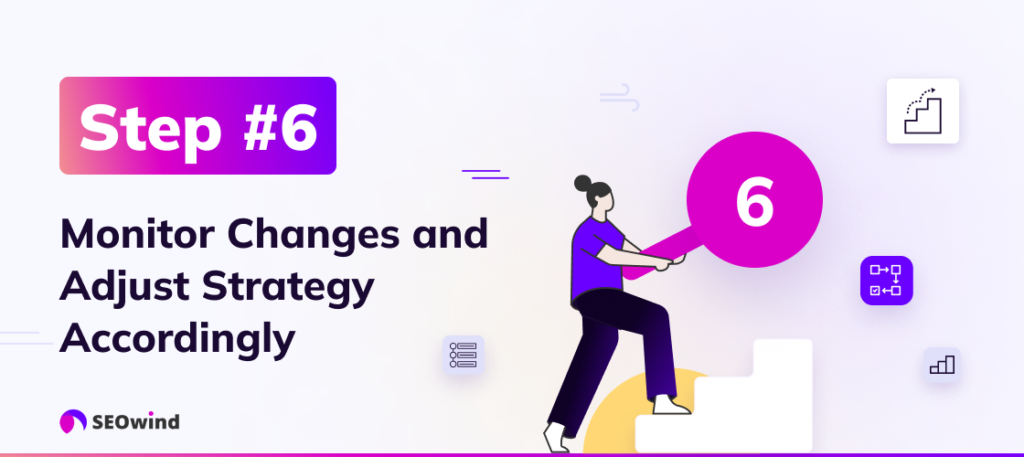Are you tired of playing catch-up with your competitors in the search engine rankings? Do you feel like you’re missing out on valuable organic traffic and potential customers? Then, it’s time to level up your search engine optimization (SEO) game with keyword gap analysis. In this comprehensive guide, we’ll explore this technique’s significance and benefits while providing step-by-step strategies to help you identify untapped keyword potential and dominate the search landscape.
Keyword Gap Analysis Introduction

Definition and Significance
Keyword gap analysis is a powerful SEO technique that compares your website’s keyword rankings with those of your competitors. By identifying the keywords your competitors are ranking for, you can uncover valuable opportunities to improve your search engine visibility and drive more targeted traffic to your site.
By conducting a thorough keyword gap analysis, you can gain a deeper understanding of your market, identify areas for improvement, and develop a data-driven content strategy that sets you apart from the competition.
Keyword Gap Analysis vs Content Gap Analysis
While keyword gap analysis and content gap analysis may sound similar, they are two distinct SEO approaches. Keyword gap analysis focuses on identifying the keywords that your competitors are ranking for but you are not. It helps you uncover new keyword opportunities and optimize your existing content accordingly.
On the other hand, content gap analysis takes a broader approach, examining your industry’s overall content landscape. This involves analyzing the types of content your competitors are creating, the topics they cover, and the formats they use. By identifying gaps in your content strategy, you can create new, valuable content that addresses those weaknesses and attracts your target audience.
Why Keyword Gap Analysis?

Considering the fierce competitiveness of digital marketing, staying ahead of the curve is an absolute necessity. As businesses vie for the top spots on search engine results pages (SERPs), the importance of a well-crafted keyword strategy cannot be overstated.
By conducting a thorough keyword gap analysis, you can uncover valuable insights that will inform your content strategy and help you optimize your website to maximize visibility. You’ll be able to identify keywords your competitors are ranking that you’re not and opportunities to improve your existing content to better target high-value keywords.
Moreover, keyword gap analysis helps you stay agile in an ever-changing digital landscape. As user behavior and search trends evolve, regularly assessing your keyword gaps ensures that you’re always in tune with your audience’s needs and preferences. By continuously refining your keyword strategy based on these insights, you can stay ahead of the competition and maintain a strong presence in organic search results.
The Benefits of Keyword Gap Analysis

Keyword gap analysis is a powerful tool that can significantly enhance your SEO and content strategy while boosting your organic search performance. By identifying the keywords your competitors rank for and that you haven’t targeted, you’ll discover untapped opportunities to improve your search visibility and drive more targeted traffic to your website.
For SEO and Content Strategy
Conducting a keyword gap analysis can provide invaluable insights for refining your SEO and content strategy. By identifying high-value keywords your competitors are leveraging, you can pinpoint areas where your content may be lacking and develop targeted strategies to fill those gaps.
This process helps you focus on creating content that resonates with your target audience and addresses their specific needs and interests. Incorporating these high-impact keywords into your content can improve your search rankings, attract more qualified leads, and drive more conversions.
Moreover, keyword gap analysis can help you stay ahead of the curve in your industry. By monitoring your competitors’ keyword strategies, you can identify emerging trends and adapt your content accordingly, ensuring your website remains relevant and competitive.
Organic Search Performance
The benefits of keyword gap analysis extend beyond informing your content strategy. It can also directly impact your organic search performance. By identifying and targeting the keywords your competitors are ranking for, you can significantly boost your search visibility and drive more organic traffic to your website.
This is particularly important in today’s competitive digital landscape, where even minor improvements in search rankings can make a big difference in traffic and conversions. By focusing on high-value keywords that your competitors are already leveraging successfully, you can quickly gain ground and start seeing results.
Furthermore, keyword gap analysis can help you identify long-tail keywords and niche opportunities that your competitors may have overlooked. By targeting these less competitive keywords, you can attract highly targeted traffic and establish yourself as an authority in your industry.
Keyword gap analysis can help you achieve faster results and stay ahead of the competition by providing actionable insights and helping you prioritize your efforts.
A Comprehensive Guide to Conducting a Keyword Gap Analysis

Conducting a keyword gap analysis may seem daunting at first, but with the right approach and tools, it can be a straightforward process that yields valuable insights. In this guide, we’ll walk you through the essential steps that will help you identify new opportunities and gain a competitive edge in your market.
The process can be broken down into six key steps:
- Identify your competitors
- Choose the right tools for analysis
- Gather and analyze your keywords
- Identify opportunities and prioritize actions
- Implement findings from your keyword gap analysis
- Monitor changes and adjust strategy accordingly
Now, let’s explore each of these steps in detail to provide you with actionable insights and best practices for optimizing your keyword gap analysis.
Step 1: Identify Your Competitors

The first crucial step in conducting a keyword gap analysis is identifying your main competitors. These are the businesses or websites that consistently rank well for your target keywords and compete with you for organic search traffic. To find competitor keywords, you need to know who your real competitors are in the SERPs.
Start by listing the brands you already know of in your niche. Then, expand this list by searching for your primary keywords on Google and noting down the websites that frequently appear in the top positions. These are your online search competitors, even if they’re not direct business competitors.
When finding competitors’ keywords, focus on those websites that consistently rank in the top 10 positions for your main target keywords. These are the ones you want to analyze in-depth to understand how to identify new keywords and opportunities for your own site.
Another effective tactic for finding competitors’ keywords is to use SEO tools like Semrush, Ahrefs, or Moz. These tools have features that allow you to input your domain and automatically generate a list of your top organic search competitors based on keyword overlap. This can save you time when identifying relevant competitors to include in your keyword gap analysis.
Once you have your list of main competitors, you’re ready to move on to the next step of finding out what keywords competitors are using successfully. Knowing how to find your competitors’ keywords will empower you to create strategies to outrank them in the search results.
Step 2: Choose the Right Tools for Analysis

Selecting the right keyword gap analysis tool is crucial for conducting a thorough and insightful analysis. There are several powerful tools available in the market, each with unique features and capabilities. Some popular options include SEMrush’s Keyword Gap tool, Ahrefs’ Content Gap tool, and other free keyword competition (This link doesn’t seem relevant to the topic) analysis tools.
When choosing a tool, consider factors such as the depth of data it provides, ease of use, and integration with your existing SEO toolkit. Look for a tool that offers comprehensive data on search volume, keyword difficulty, cost-per-click (CPC), and search intent. It should also allow you to simultaneously compare your website’s keyword performance against multiple competitors.
At SEOwind, we utilize our proprietary keyword gap analysis tool to gather detailed keyword data from each competitor. Our tool provides valuable insights on key metrics such as search volume, match type, the number of competitors ranking for each keyword, keyword difficulty, CPC, search intent, and priority level.
By leveraging SEOwind’s powerful analysis capabilities, you gain a clear understanding of your keyword landscape and identify opportunities for improvement. Our tool streamlines the data collection and analysis process, allowing you to focus on developing effective strategies based on the insights gained.
Remember, the right tool should provide you with data and help you make sense of it. Look for a tool that offers visualizations, customizable reports, and actionable recommendations to guide your keyword strategy. With the right solution, you’ll be well-equipped to uncover valuable keyword gaps and take your SEO efforts to the next level.
Step 3: Gather and Analyze Your Keywords

Once you’ve identified your competitors and chosen the right tools, it’s time to gather and analyze your new keywords to uncover valuable insights and opportunities.
Find Your Unique Keywords vs. Competitors’ Keywords
Start by identifying the keywords that are unique to your website compared to your competitors. These are the keywords that you’re ranking for, but your competitors aren’t. Knowing your unique keywords helps you understand your strengths and the areas where you have a competitive advantage.
At the same time, look for keywords your competitors are ranking for that you haven’t targeted, which represent potential opportunities to improve. Tools like Ahrefs make it easy to see what keywords competitors are using and compare them with your own keyword list.
Analyze Overlapping and Missing Keywords
Next, analyze the keywords for which both you and your competitors rank. These overlapping keywords indicate areas of direct competition. Assess your ranking positions for these keywords compared to your competitors. Are you outperforming them, or do you need to step up your game?
Also, pay attention to the keywords for which none of you currently rank. These missing keywords represent untapped opportunities you can target to gain a competitive edge. They may be relevant but have yet to be fully explored.
Understand Types of Keywords: Transactional, Informational, Navigational
As you analyze your keywords, it’s crucial to understand the different types of keywords and their intent. Broadly, keywords can be categorized into three types:
- Transactional keywords indicate a user’s intention to make a purchase or complete an action, such as “buy,” “order,” or “sign up.”
- Informational keywords suggest that the user is seeking information or answers to a question, such as “how to,” “what is,” or “best ways to.”
- Navigational keywords are used when trying to find a specific website or webpage, often including brand names or products.
Understanding the intent behind keywords helps you create content that aligns with the user’s needs and stage in the buyer’s journey.
Create Actionable Keyword Clusters
After analyzing your keywords, it’s time to organize them into actionable clusters. Keyword clustering involves grouping semantically related keywords based on their themes, intent, or relevance to specific topics.
By creating keyword clusters, you can:
- Identify content opportunities: Each cluster represents a potential topic for creating new content or optimizing existing pages.
- Streamline your content strategy: Keyword clusters help you organize your content plan and ensure that you cover all the critical aspects of a topic.
- Improve your website’s structure: By aligning your content with keyword clusters, you can create a logical and user-friendly website structure.
Remember, the goal of keyword gap analysis is not just to find new keywords but to uncover actionable insights. Focus on selecting high-value, low-competition keywords that align with your content strategy and can drive traffic and conversions.
Advanced Strategies in Keyword Gap Analysis

Once you’ve mastered the basics of keyword gap analysis, it’s time to try out some advanced strategies that can take your SEO game to the next level. These techniques help you uncover even more opportunities to outrank your competitors and drive targeted traffic to your website.
Page-Level Keyword Gap Analysis
While a high-level keyword gap analysis is essential, don’t forget to zoom in and conduct a page-level analysis as well. This compares specific pages on your website with similar pages on your competitors’ sites. By doing so, you can identify gaps in content depth, keyword usage, and on-page optimization.
For example, let’s say you have a product page for “wireless headphones.” Conduct a competitive keyword analysis by comparing your page with the top-ranking pages for that keyword. Look for opportunities to incorporate missing keywords, improve content quality, and optimize your page structure to better match user intent.
Utilize Filters to Narrow Down Opportunities
When conducting an SEO gap analysis, you might be overwhelmed by the sheer number of keyword opportunities. To simplify the process, use filters within your keyword research tool to narrow down the list.
Some useful filters to consider include:
- Search volume: Focus on keywords with a minimum search volume that aligns with your business goals.
- Keyword difficulty: Prioritize keywords with a difficulty score that matches your website’s authority and competitive position.
- SERP features: Target keywords that trigger specific SERP features, such as featured snippets or “People also ask” boxes.
By applying these filters, you can quickly identify the most promising keyword opportunities and prioritize your efforts accordingly.
Explore Vertical-Specific Keyword Gaps
In addition to analyzing your direct competitors, consider exploring keyword gaps within your specific industry or vertical. This can help you uncover untapped opportunities that your competitors might be overlooking.
For instance, if you run an e-commerce store selling outdoor gear, look beyond other outdoor retailers and analyze keyword gaps in related verticals, such as travel blogs, hiking forums, or adventure magazines. By doing so, you can expand your content strategy and attract a broader audience of potential customers.
Step 4: Identify Opportunities and Prioritize Actions

Once you’ve gathered and analyzed your keyword data, you’ll need to identify the opportunities and prioritize your actions. Focus on two main areas: prioritizing high-potential keywords for quick wins and benchmarking against top-ranked content.
Prioritize High-Potential Keywords for Quick Wins
When looking at your keyword data, it’s easy to get overwhelmed by the sheer volume of information. That’s why it’s crucial to prioritize your efforts. Start by focusing on keywords with high search volume and low competition. These are the low-hanging fruit that can drive substantial traffic to your site without requiring a ton of effort.
Focus on keywords with high search volume and low competition first. These are easier to rank for and can drive substantial traffic. But don’t stop there. You’ll also want to prioritize keywords that align with your business goals and user intent. This ensures that the traffic you’re driving is actually valuable to your bottom line.
Remember, gap analysis helps businesses adapt to market demands, meet customer expectations, and differentiate themselves from competitors by identifying new opportunities, developing innovative solutions, and improving their value proposition to gain a competitive edge. By prioritizing the right keywords, you’re setting yourself up for success.
Benchmark Against Top Competing Content
Once you’ve identified your high-priority keywords, it’s time to benchmark against your top competitors. Take a look at the content that’s currently ranking for those keywords. What are they doing well? What could be improved?
This is where you can really start to differentiate yourself. If you notice that your competitors are all taking a similar approach, consider how you could tackle the topic differently. Or, if you see that their content is lacking in certain areas, think of ways to create something more comprehensive and valuable.
It’s also important to understand what type of content is ranking well. Are they mostly blog posts? Videos? Infographics? This can give you insight into the format that resonates best with your target audience.
By using your competitors as a benchmark, you can identify gaps in their content and discover how to stand out. This is especially important when it comes to high-competition keywords. If you want to rank for competitive keywords, you need to create truly exceptional content.
Keyword gap analysis is all about finding opportunities to outperform your competitors and capture more organic search traffic. By prioritizing the right keywords and benchmarking against top content, you’ll be well on your way to achieving those goals.
Step 5: Implement Findings from Your Keyword Gap Analysis

Now that you’ve identified keyword gaps and opportunities, it’s time to put your findings into action. At this point, you’ll start creating new content strategies and optimizing existing material to boost your organic search performance.
Create New Content Strategies Based on Gap Analysis
Armed with insights from your keyword gap analysis, develop a content strategy that targets the keywords you’ve identified as high-value but do not rank for. This is your chance to gain a competitive edge and capture untapped search traffic.
When creating new content, keep these tips in mind:
- Focus on high-potential keywords that align with your business goals
- Understand the search intent behind each keyword and create content that satisfies user needs
- Ensure your content is comprehensive, engaging, and provides unique value
- Optimize your content for on-page SEO factors like title tags, meta descriptions, and header tags
- Incorporate relevant internal and external links to enhance your site’s authority
By targeting competitor SEO keywords and creating high-quality content around them, you can gradually close the gap and improve your search rankings.
Tweak Existing Content for Enhanced Performance
In addition to creating new content, don’t overlook the potential of your existing content. Analyze your current web pages and identify opportunities to optimize them based on your keyword gap analysis findings.
Ask yourself what keywords your competitors use that can be naturally incorporated into your existing content. By strategically adding these words and phrases and improving the overall quality and relevance of your content, you can boost its performance in search results.
Here are some ways to optimize your existing content:
- Update outdated information and add fresh, relevant insights
- Expand thin content to provide more comprehensive coverage of the topic
- Restructure content with clear headings, subheadings, and bullet points for better readability
- Optimize title tags, meta descriptions, and header tags to include target keywords
- Add multimedia elements like images, videos, and infographics to enhance user engagement
Remember, the goal is not to stuff keywords in unnaturally but to enhance the value and relevance of your content for both users and search engines.
Step 6: Monitor Changes and Adjust Strategy Accordingly

Keyword gap analysis isn’t a one-and-done task. It’s an ongoing process that requires regular monitoring and adjustments to stay ahead of the competition. The digital landscape is constantly evolving, with new trends, algorithms, and competitors emerging all the time. To maintain your edge, keep a vigilant eye on these changes and adapt your strategy accordingly.
The Importance of Regularly Scheduled Audits
Picture the future for a moment: you’ve conducted a thorough keyword gap analysis, implemented your findings, and are now enjoying the fruits of your labor. Your content is ranking higher, traffic is flowing in, and conversions are on the rise. It’s tempting to sit back and relax, but don’t get too comfortable just yet!
If you want to maintain your success, we recommend performing keyword gap analysis at least once a quarter. Why so often, you might ask? Well, the SEO world is dynamic. Your competitors are constantly refining their strategies, search engines are updating their algorithms, and new keywords are emerging as user behavior evolves.
By conducting regular audits, you can stay on top of these changes and ensure continuous SEO improvement. You’ll be able to identify new keyword opportunities, spot shifts in competitor strategies, and adapt your content to maintain its relevance and ranking power.
Tips on Keeping Your Keyword List Fresh and Competitive
So, how do you keep your keyword list fresh and competitive? Here are a few tips:
- Monitor your competitors’ content: Keep an eye on what your competitors are publishing. Are they targeting new keywords? Have they identified gaps that you missed? Use this information to refine your own keyword list.
- Stay updated on industry trends: Follow industry blogs, attend webinars, and engage with your community to stay informed about emerging trends and topics. These can often translate into new keyword opportunities.
- Analyze user behavior: Use tools like Google Analytics to understand how users interact with your site. Which pages are they landing on? What search terms are driving traffic? Use these insights to optimize your keyword targeting.
- Leverage long-tail keywords: Don’t just focus on high-volume, competitive keywords. Long-tail keywords, while lower in search volume, can often drive more targeted, conversion-ready traffic.
Regularly monitoring changes and adjusting your approach ensures that your content remains relevant, competitive, and optimized for success.
How SEOwind conducts keyword gap analysis

SEOwind’s powerful SEO Missions feature is designed to help businesses of all sizes, including small businesses, outrank their competitors by conducting effective keyword gap analysis. With SEO Missions, you can identify high-value, low-competition keywords that your competitors are targeting but you’re missing out on. This enables you to create targeted content strategies to improve your search visibility and drive more organic traffic to your website.
How to Perform Keyword Gap Analysis with SEO Missions
Step 1: List your competitors
Identify the main competitors in your niche, focusing on those who consistently rank well for your target keywords.
Step 2: SEOwind analyzes the data
Use SEOwind to gather detailed keyword data from each competitor. Our keyword gap analysis provides insights into:
- Search Volume
- Match – number of the competitors ranking for this keyword
- Keyword Difficulty
- Cost Per Click
- Search Intent
- Priority
Step 3: Select keywords
Analyze the data to find high-value, low-competition keywords. Afterward, choose keywords that can drive traffic and conversions and prioritize those that align with your content strategy.
Whether you’re a small business looking to establish a robust online presence or an enterprise aiming to maintain your competitive edge, SEOwind’s SEO Missions can help you achieve your goals. By conducting regular keyword gap analysis and implementing the insights provided by our tool, you can stay ahead of the curve and continuously improve your search rankings.
So why wait? Start your SEO Mission now and unlock the full potential of your online presence with SEOwind’s powerful keyword gap analysis tools. With SEO Missions available in both Pro and Agency plans, you can choose the subscription that best fits your needs and budget and start outranking your competitors today!


